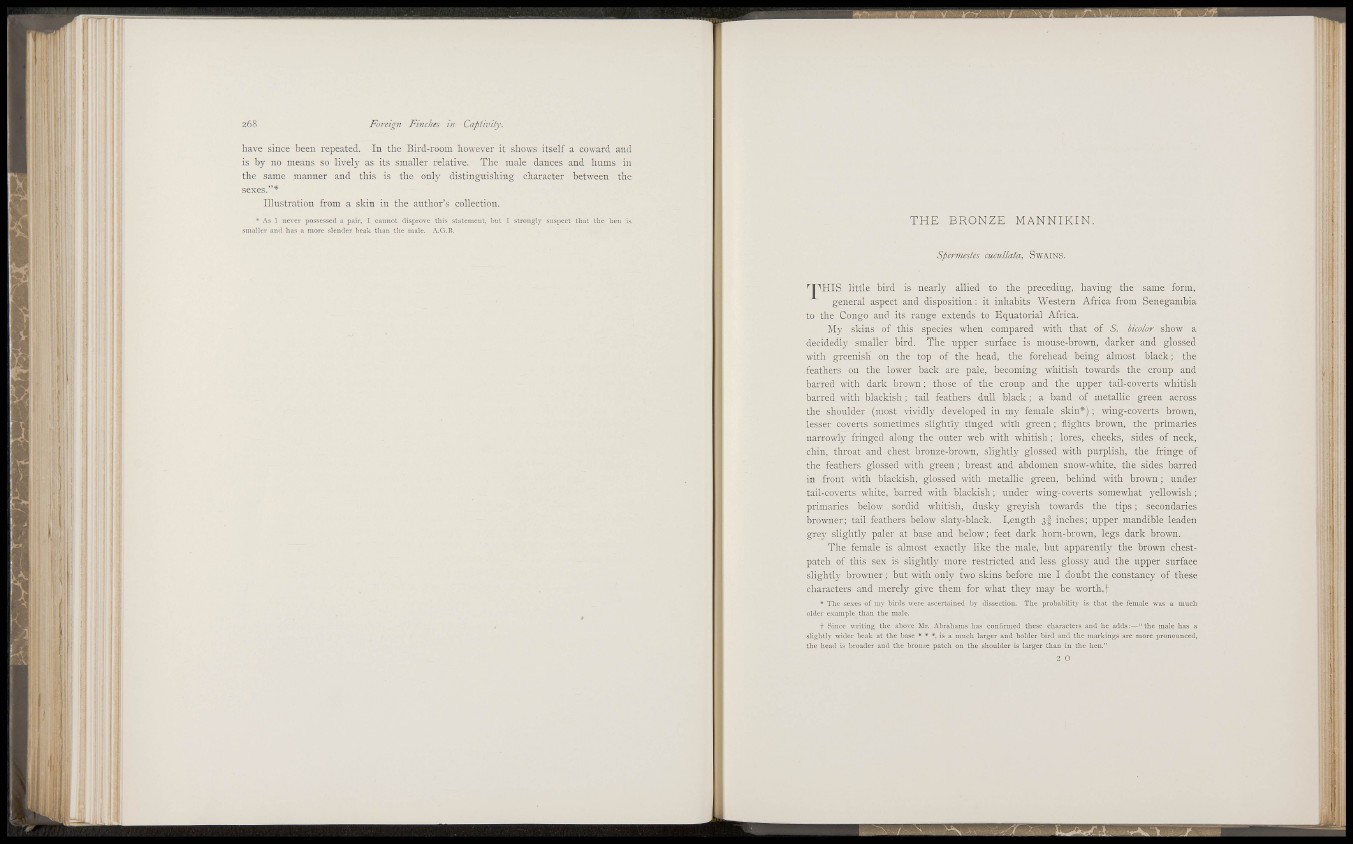
JjMÍlfi
258 Foreign Finches in Captivity.
¡ l ! í ! 1 l '
have since been repeated. In the Bird-room however it shows itself a coward and
is by no means so lively as its smaller relative. The male dances and hums in
the same manner and this is the only distinguishing character between the
sexes."*
Illustration from a skin in the author's collection.
A.s I never po.ssessed a pair, I cannot disprove this statement, bnt I strongly snspeet that the lien is
smaller and has a more slender beak than the male. A.G.Ii.
THE BRONZE MANNIKIN.
Spermestes cucullata, SwAlNS.
"1 i
i
'I , • I
1 1 1 ;
•
( '
''I'^HIS little bird is nearly allied to the preceding, having the same form,
general aspect and disposition: it inhabits Western Africa from Senegambia
to the Congo and its range extends to Equatorial Africa.
My skins of this species when compared with that of 5. bicolor show a
decidedly smaller bird. The upper surface is mouse-brown, darker and glossed
with greenish on the top of the head, the forehead being almost black; the
feathers on the lower back are pale, becoming whitish towards the croup and
barred with dark brown; those of the croup and the upper tail-coverts whitish
barred with blackish ; tail feathers dull black; a band of metallic green across
the shoulder (most vividly developed in my female skin*) ; wing-coverts brown,
lesser coverts sometimes slightly tinged with green ; flights brown, the primaries
narrowty fringed along the outer web with whitish ; lores, cheeks, sides of neck,
chin, throat and chest bronze-brown, sliglitl}' glossed with purplish, the fringe of
the feathers glossed with green ; breast and abdomen snow-white, the sides barred
in front with blackish, glossed with metallic green, behind with brown; under
tail-coverts white, barred with blackish; under wing-coverts somewhat yellowish ;
primaries below sordid whitish, dusky greyish towards the tips ; secondaries
browner; tail feathers below slaty-black. Length 3-| inches; upper mandible leaden
grey slightly paler at base and below; feet dark horn-brown, legs dark brown.
The female is almost exactly like the male, but apparently the brown chestpatch
of this sex is slightly more restricted and less glossy and the upper surface
slightl}' browner; but with onlj^ two skins before me I doubt the constancy of these
characters and merely give them for what they may be worth, t
* The sexes of niy birds were ascertained by dissection. The probability is that the female was a nuich
older example than the male.
t Since writing the above Mr. Abrahams has confirmed these character.s and he adds:—"the male has a
slightly wider beak at the base * * *, is a much larger and bolder bird and the markings are more pronounced,
the head is broader and the bronze patch on the shoulder is larger than in the hen."
2 O
. ,1 i